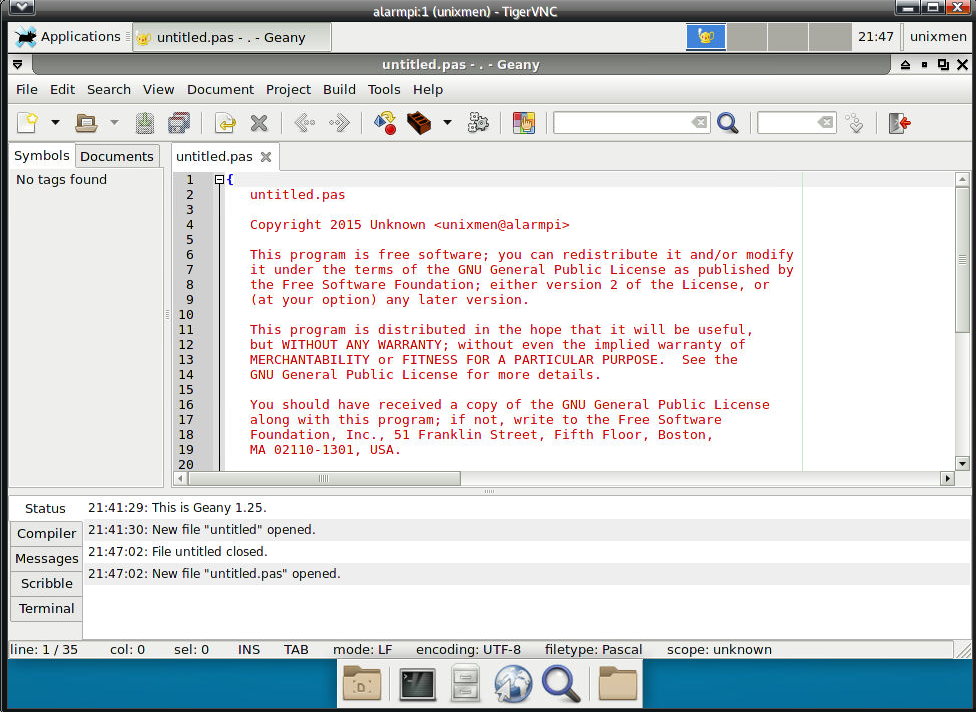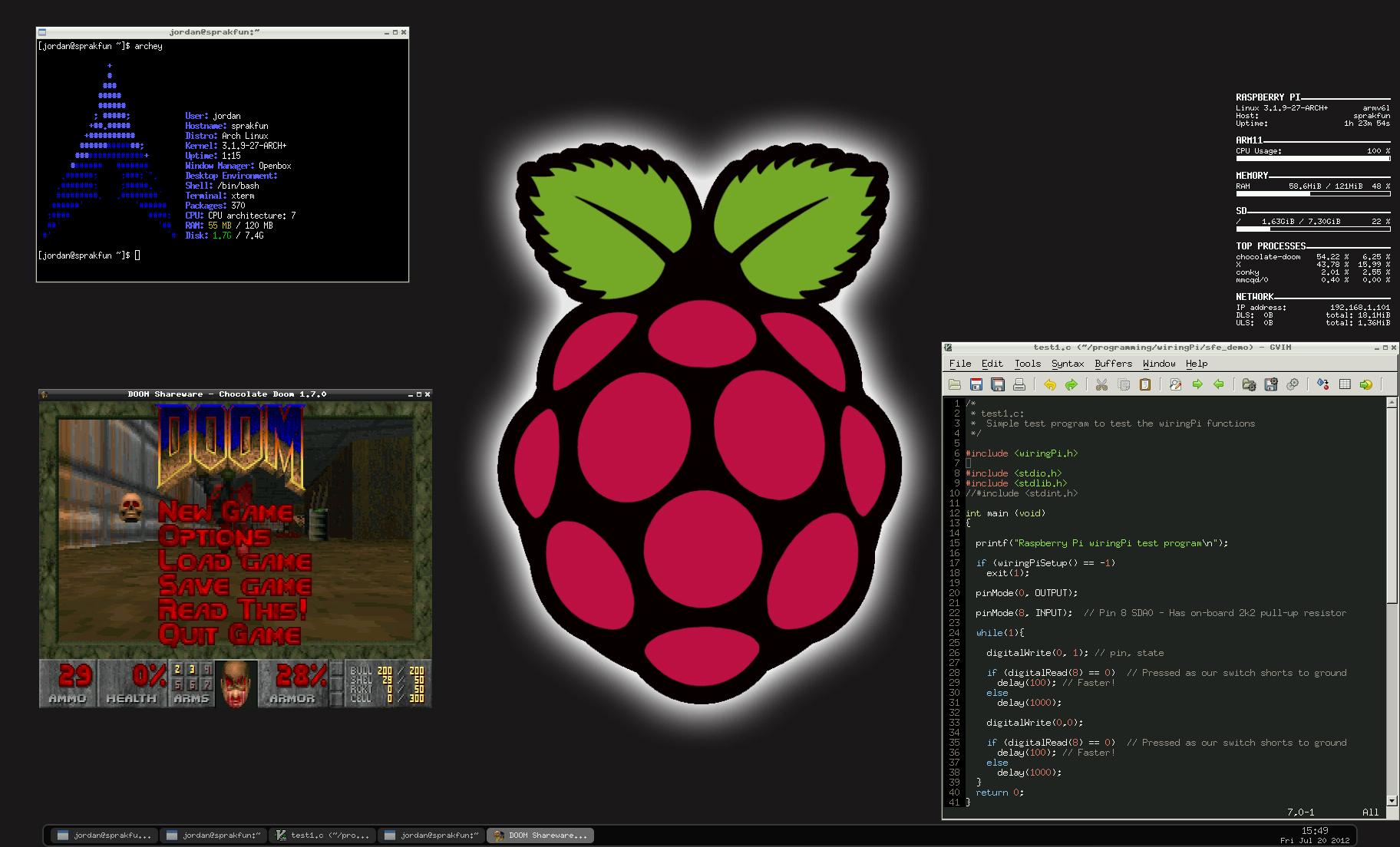
- INSTALL OPENCV RASPBERRY ARCH LINUX C RELEASE BUILD INSTALL
- INSTALL OPENCV RASPBERRY ARCH LINUX C RELEASE BUILD FOR ANDROID
- INSTALL OPENCV RASPBERRY ARCH LINUX C RELEASE BUILD SOFTWARE
- INSTALL OPENCV RASPBERRY ARCH LINUX C RELEASE BUILD DOWNLOAD
- INSTALL OPENCV RASPBERRY ARCH LINUX C RELEASE BUILD WINDOWS
Get other third-party dependencies: libraries with extra functionality like decoding videos or showing GUI elements libraries providing optimized implementations of selected algorithms tools used for documentation generation and other extras.

INSTALL OPENCV RASPBERRY ARCH LINUX C RELEASE BUILD INSTALL
Install CMake from the official site or some other source.
INSTALL OPENCV RASPBERRY ARCH LINUX C RELEASE BUILD SOFTWARE
XCode IDE is used to build software for OSX and iOS platforms.
INSTALL OPENCV RASPBERRY ARCH LINUX C RELEASE BUILD FOR ANDROID
Native toolchains for Android are provided in the Android NDK.
INSTALL OPENCV RASPBERRY ARCH LINUX C RELEASE BUILD WINDOWS
On Windows it can be Visual Studio IDE or MinGW-w64 compiler. On *NIX platforms it is usually GCC/G++ or Clang compiler and Make or Ninja build tool. OpenCV uses CMake build management system for configuration and build, so this section mostly describes generalized process of building software with CMake. This section gives a high-level overview of the build process, check tutorial for specific platform for actual build instructions. It can happen that existing binary packages are not applicable for your use case, then you'll have to build custom version of OpenCV by yourself.
INSTALL OPENCV RASPBERRY ARCH LINUX C RELEASE BUILD DOWNLOAD
There are two ways of installing OpenCV on your machine: download prebuilt version for your platform or compile from sources. However, we do not recommend using this unless those extra megabytes do really matter.Next Tutorial: OpenCV configuration options reference The stripped version appears to be twice as small. Note If the size of the created library is a critical issue (like in case of an Android build) you can use the install/strip command to get the smallest size as possible. # Change 8 to number of hardware threads available.

Įnter the created temporary directory cmake_binary_dir and proceed with: $ make -j8 # -j8 runs 8 jobs in parallel. $ cmake -D CMAKE_BUILD_TYPE=RELEASE -D CMAKE_INSTALL_PREFIX=/usr/local. Create a temporary directory, which we denote as, where you want to put the generated Makefiles, project files as well the object files and output binaries.In Linux it can be achieved with the following command in Terminal: $ cd ~/īuilding OpenCV from Source Using CMake, Using the Command Line Launch Git client and clone OpenCV repository Getting the Cutting-edge OpenCV from the Git Repository Download the source tarball and unpack it.You can use the latest stable OpenCV version available in sourceforge or you can grab the latest snapshot from the Git repository. Libjpeg-dev libpng-dev libtiff-dev libjasper-dev libdc1394-22-dev $ sudo apt-get install python-dev python-numpy libtbb2 libtbb-dev Libavcodec-dev libavformat-dev libswscale-dev $ sudo apt-get install cmake git libgtk2.0-dev pkg-config The packages can be installed using a terminal and the following commands or by using Synaptic Manager: $ sudo apt-get install build-essential libjpeg-dev, libpng-dev, libtiff-dev, libjasper-dev, libdc1394-22-dev.ffmpeg or libav development packages: libavcodec-dev, libavformat-dev, libswscale-dev.Python 2.6 or later and Numpy 1.5 or later with developer packages (python-dev, python-numpy).GTK+2.x or higher, including headers (libgtk2.0-dev).These steps have been tested for Ubuntu 10.04 but should work with other distrib as well. $ sudo nano /etc/ld.so.conf.d/nfĪt the end of the file we write the location of pkg-config (you can learn with echo $ PKG_CONFIG_PATH) $ PKG_CONFIG_PATH=$PKG_CONFIG_PATH:/usr/local/lib/pkgconfig export PKG_CONFIG_PATH

Īfter this job is done, just make a few adjustments. WITH_V4L=ON -D INSTALL_C_EXAMPLES=ON -D INSTALL_PYTHON_EXAMPLES=ON -D BUILD_EXAMPLES=ON -D WITH_GTK=ON -D WITH_OPENGL=ON. $ cmake -D CMAKE_BUILD_TYPE=RELEASE -D CMAKE_INSTALL_PREFIX=/usr/local -D WITH_TBB=ON -D BUILD_NEW_PYTHON_SUPPORT=ON -D $ tar -xvjpf OpenCVXX( Download version for linux ) $ sudo apt-get -y install build-essential cmake cmake-qt-gui pkg-config libpng12-0 libpng12-dev libpng++-dev libpng3 libpnglite-dev zlib1g-dbg zlib1g zlib1g-dev pngtools libtiff5-dev libtiff5 libtiffxx0c2 libtiff-tools I do not know the above error but you can install OpenCV by following the steps below at Raspberry Pi. If you haven’t already booted into the Desktop,

Running the Script requires the Raspbian Desktop. D OPENCV_EXTRA_MODULES_PATH=~/opencv_contrib-3.0.0/modules \ĭownload the Script and sample image with Libxvidcore-dev libx264-dev libgtk2.0-dev \ Libavcodec-dev libavformat-dev libswscale-dev libv4l-dev \ Libjpeg-dev libtiff5-dev libjasper-dev libpng12-dev \ Sudo apt-get install -y build-essential git cmake pkg-config \ Installing open cv is very easy just do this.


 0 kommentar(er)
0 kommentar(er)
